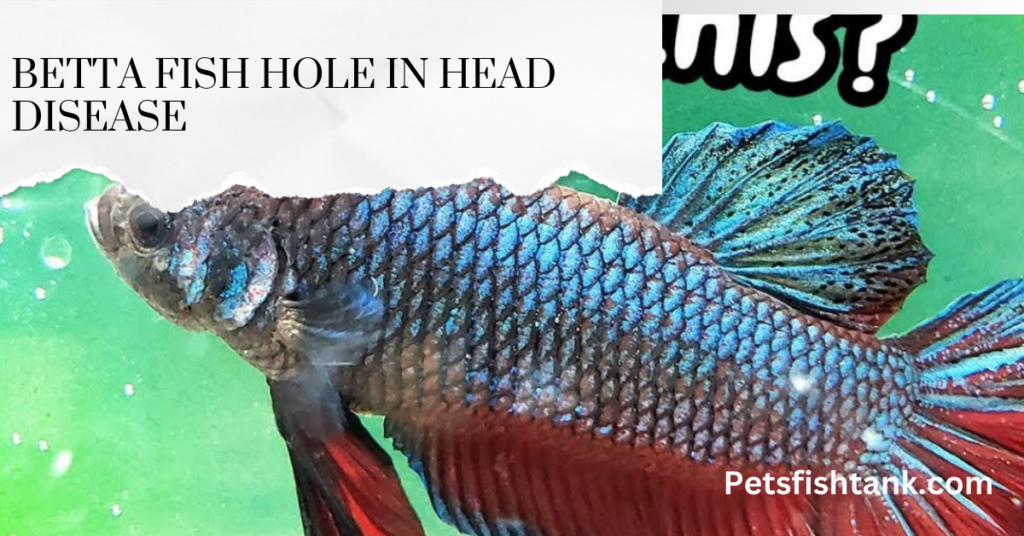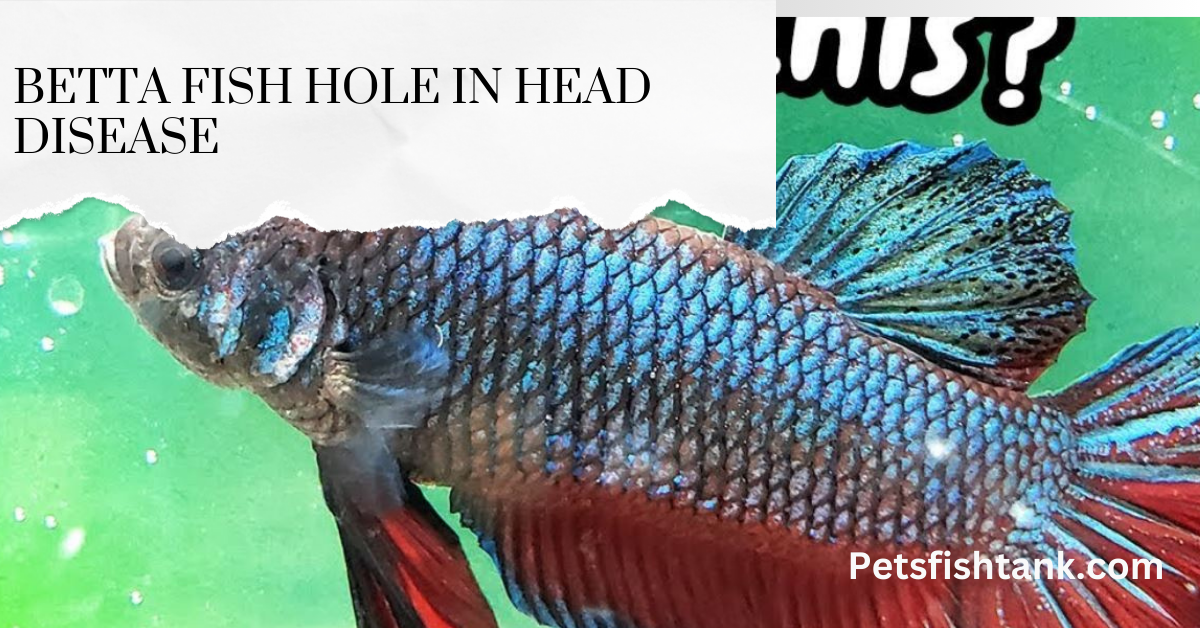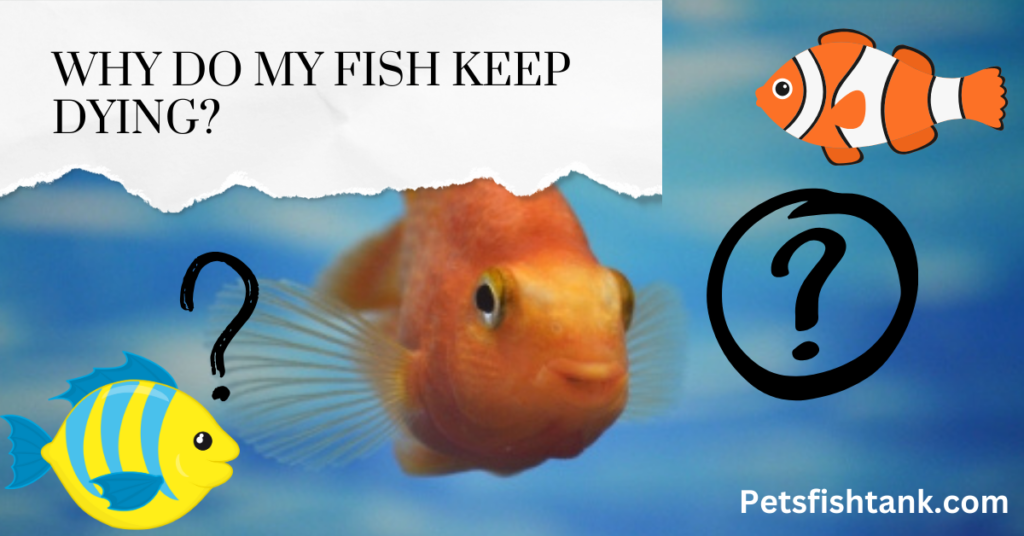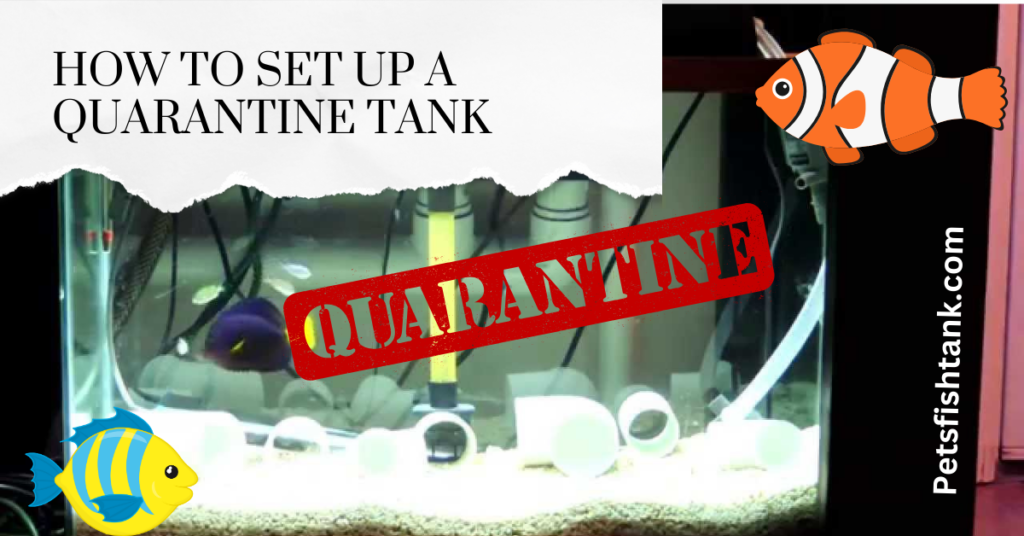As a betta fish owner, I’ve come across a common condition known as “Betta fish hole in head disease“. It’s a scary instance when you first notice tiny pinholes on your betta’s head and suspect something is wrong.

In this article, we will delve into the nitty-gritty of this disease, including look-alike conditions such as HITH (Hole in the Head) and HLLE (Head and Lateral Line Erosion), their symptoms, causes, and treatments. We will break down these sections for a comprehensive overview of this disease that is often mistaken for other conditions.Stay with me as we explore more about “Betta fish hole in head disease: symptoms, causes, and cure”.
What Causes Hole-in-the-Head Disease?
- Hole-in-the-Head Disease (HITH) is often linked to protozoan parasites such as those from the Hexamita and Spironucleus genera, which invade the digestive tract.
- A weakened immune system in fish can increase susceptibility to various parasites and bacteria, leading to open wounds on the head.
- Various pathogens can enter the fish’s body, causing multiple infections and wreaking havoc over time.
- External sources of infection include new fish or sick animals introduced into a home aquarium without proper quarantine measures, with feeder fish potentially acting as carriers of the disease.
- Poor water quality can lead to harmful blooms of microorganisms, contributing to HITH disease through elevated ammonia and nitrite levels that can be detected using test strips.
- Nutrient deficiencies in the fish’s diet, such as lacking essential vitamins and minerals, can further harm their immunity and overall health.
- Stress factors, including bullying, temperature swings, and pH imbalances, can also compromise fish immunity, making them more prone to health issues.
Hole In The Head Disease (Or Sensory Pores) In Betta Fish
Betta fish naturally have sensory pores on their heads, which are often misunderstood as signs of hole-in-the-head disease. These pores, which may appear as outsized pinholes, are in fact sensory receptors forming part of the lateral line system that helps betta fish detect changes in their environment.
These pores may be more noticeable in lighter-colored bettas, particularly those with dragon-scale genetics.If your betta is eating normally and actively swimming, there is no need to worry.These holes on your fish’s head are symmetrical and evenly distributed, indicating they are sensory receptors, not signs of a hole-in-head disease.
However, understanding the difference between these natural sensory receptors and the symptoms of the dreaded “betta fish hole in head disease” is crucial for the health and wellbeing of your pet.
Signs Of Hole In The Head Disease
The severity of a hole-in-the-head infection in betta fish can be determined by the current stage of the disease and the symptoms exhibited by the fish. In the initial stages, you may notice pinhole-sized dots appearing on the head, around the eyes and nose of your fish.
Other early signs include the presence of white stringy feces, subdued coloration in the affected areas, loss of appetite, and lethargy.As the disease progresses, these pinhole-sized dots can develop into wider lesions.A characteristic symptom at this stage is the discharge of yellow or white colored, thread-like mucus from these pits.If you notice these symptoms, it is a clear indication that the disease has significantly progressed, and immediate treatment is necessary to prevent further deterioration of your betta fish’s health.
Bettas Hole In The Head: Common Causes and Contributing Factors
A significant cause of hole-in-the-head disease in fish is a parasite known as Hexamita. This parasite is commonly associated with discus and cichlids but can affect various fish species, including the labyrinth fish such as bettas.
The parasites are typically present in the fish’s gastrointestinal tract and in a subdued condition, they are not capable of causing considerable harm.However, when the Hexamita attack and take hold, it is usually because the fish is stressed and the fish’s immune system is weakened, giving the parasites a chance to flourish.
Environmental stressors can take many forms, but poor water quality and nutritional deficiency are often leading causative factors in hole-in-the-head disease cases. It’s important to note, however, that while there is scientific evidence that proves Hexamita can cause HITH, the reason it’s widely believed Hexamita is behind the disease is due to the fact that the parasite is present in almost every case of hole in the head and lateral line erosion.
1- Hexamita and Stress
The primary cause of hole-in-the-head disease in bettas often sits atop the list of most significant stressors for fish: poor water quality. Toxins in the form of nitrates can build up in the aquarium water, leading fish into a state of physiological turmoil.
The deterioration of sensitive tissues in the head area can cause pits to develop, heralding the onset of the disease. In many cases, improving water parameters has proven to be an effective cure. Regular water changes, careful monitoring of nitrate levels, and proper tank maintenance can mitigate the adverse effects and promote the health and longevity of your betta fish.
2- Poor Water Quality
Poor water quality is a primary cause of the hole-in-the-head disease and is one of the most significant stressors for fish. Toxins, especially in the form of nitrates, can quickly accumulate in the aquarium water. This toxic buildup can plunge fish into a state of physiological turmoil, which can lead to the deterioration of sensitive tissues in their head area.
This tissue damage can cause pits to develop, a hallmark sign of the onset of the hole-in-the-head disease. In many cases, improving the water parameters – ensuring regular water changes, diligent monitoring of nitrate levels, and adequate tank maintenance – has proven to be an effective cure.This proactive approach can alleviate the adverse effects of poor water quality, thus promoting the health and longevity of your betta fish.
3- Nutrient Deficiency
An inadequate diet, devoid of necessary nutrients, can be a primary cause of fish suffering from hole-in-the-head disease. Nutrient deficiency, alongside stress, weakens the fish’s immune system, making them more susceptible to catching diseases. Optimizing the diet, in addition to maintaining optimal water quality, has shown to have a significant effect in treating hole-in-the-head disease.
Keep in mind that this remedy is something that must be practiced consistently, regardless of the presence of the disease. Providing your betta with a balanced and varied diet, along with ensuring optimal water conditions, is fundamental to their overall health and well-being.
How To Treat Hole In The Head Disease In Betta Fish?
When all preventive measures fail and your betta fish shows definitive signs of hole-in-the-head disease, it’s time to resort to more direct treatments. Many experienced fishkeepers recommend medications specifically formulated to eliminate Hexamita and other internal parasites. Metronidazole is commonly used in such cases and has proven to be effective.
However, it’s essential to approach this condition with a comprehensive mindset. Simply treating the symptoms won’t prevent future occurrences. Identifying why your betta developed holes in the first place is crucial. Was it due to poor water quality? Or perhaps a nutrient deficiency in the fish’s diet? By addressing these factors, you can more effectively eliminate the disease and prevent its reoccurrence.
Way 01- Test Water Parameters
The first step in maintaining a healthy environment for your betta fish is to test the parameters of your aquarium water frequently, using a reliable test kit. Crucial parameters to check include levels of ammonia, nitrite, and nitrate. Ideally, ammonia and nitrite should be at 0 ppm, while nitrate should be closer to 20 ppm.
Clean water is clear water and is the principal defense against poor water quality, a primary contributing factor to the hole-in-the-head disease. If your test kit measures elevated levels of these toxins, it’s an indication that it’s time to perform partial water changes, at least once a week or every two weeks, to ensure these toxins are effectively removed.By keeping a close eye on these parameters, you can significantly minimize the chances of your betta fish developing hole-in-the-head disease.
Way 02- Improve The Diet
Just like humans, fish in captivity have specific nutritional requirements to stay healthy and disease-free. Bettas, in particular, are insectivores and hence, their diet should be relatively high in crude protein. The staple food to feed them should be high-quality pellets or flakes specifically formulated for betta fish.
Occasionally, it is beneficial to treat your bettas with live or frozen foods like bloodworms, daphnia, or brine shrimp, which closely mimic their natural diet and provide additional nutrients essential for their optimal health and longevity.
Way 03- Treat With Metronidazole
Metronidazole is often considered the most effective medication for curing hole-in-the-head disease, especially when it’s caused by Hexamita parasites. This potent antibiotic can be administered in multiple ways: it can be directly added to the aquarium water, mixed with the fish’s food, or even used in bath treatments.
Among the myriad of Metronidazole-based fish medicines available, Seachem MetroPlex is often recommended as the best. The treatment protocol typically extends over several days. After some days of usage, a significant improvement in the fish’s health is usually observed. The lesions start to heal, the holes begin to get smaller, and any white discharge is noticeably reduced.The progression towards recovery becomes evident, demonstrating the effectiveness of Metronidazole treatment for hole-in-the-head disease.
Can Carbon In The Filter Cause Hole In The Head?
Scientific studies and empirical evidence have yet to conclusively prove the presence of carbon as a causative factor for hole-in-the-head disease. Although cases have been reported where fish developed the disease while carbon was found in the filtration system, it’s important to note that correlation does not necessarily imply causation.
In other words, just because carbon is present in the tank when the fish develop the disease doesn’t conclusively mean it has actually caused hole-in-the-head. Rightfully so, this makes logical sense as there have also been reported cases where the disease went away once the carbon was removed.
In the pursuit of truth, it would be interesting to see if the disease reoccurs when carbon is brought back into the equation. If the hole-in-the-head disease does make a reappearance following the aforementioned events, it might lend more credence to the theory that carbon is a contributing factor. However, such phenomenon could also be due to the carbon removing vital trace elements and micronutrients from the water.
This scenario seems somewhat similar to the effects of a poor diet and lack of vital nutrients, known to stress a fish’s immune system, leading to hole-in-the-head and head and lateral line erosion. Therefore, while some might argue the connection, the evidence remains inconclusive, and further investigation is needed.
How To Prevent Hole In The Head Disease In Betta Fish?
- Bettas, like most fish, possess an inherent ability to fight off and resist diseases to a certain extent. When they are stressed, their immune system could become suppressed, allowing pathogens to take hold.
- The first step to prevent the hole-in-the-head disease is to work on reducing environmental stressors. Maintain optimal water quality in the aquarium and keep the water toxin-free, achieved through adequate filtration and regular water changes.
- It’s equally important to provide bettas with the best diet. Any compromise on their nutritional requirements weakens their immune systems, making these tiny aquatic creatures an easy victim of hole-in-the-head disease and various other diseases.
- Although bettas are relatively hardy fish, temperature fluctuations can stress them out. Hence, maintaining a stable temperature in their tank is crucial.
- Lastly, under no circumstances should aquariums be overcrowded or contain incompatible tank mates, as these conditions can also contribute to stress, ultimately leading to disease.
Can Bettas Fully Recover From Hole In The Head?
Hole in the Head disease (HITH) is not typically fatal and is easily treatable, especially in Betta fish. However, it should be noted that if a Betta has developed severe lesions, these may leave a scar and the fish may not regain its original color in the infected area. Early detection and prompt intervention are key to keeping the disease from progressing and reducing the damage done.
Providing attentive care, appropriate treatment, and a stress-free environment greatly enhances a Betta’s chances of completely recovering from the hole in the head disease.The recovery period involves closely monitoring the Betta’s progress. If the fish shows signs of improvement, such as a reduction in the size of the lesions, a boost in appetite, and increased activity, this indicates a positive response to the treatment.
On the other hand, if there is no improvement or the condition worsens, this could be an indication that the disease has been misdiagnosed. In this case, consulting a veterinarian is highly suggested.
Conclusion
In wrapping up this article, it’s our hope that the information shared has educated you about hole-in-the-head disease and head and lateral line erosion, two conditions that can occur in betta fish. These conditions, often abbreviated as HITH and HLLE, respectively, are not as prevalent in bettas as they are in other species, but that doesn’t mean they can’t affect your favorite fish.
Signs of HITH in bettas often start as small pin-sized holes in your betta’s head, which are likely to be mistaken for sensory pores. However, if it is indeed HITH, these holes will slowly enlarge and deepen, indicating a serious sign of illness. Betta fish suffering from HITH often exhibit additional signs, such as food refusal, subdued coloration, and lethargic behavior.
Understanding these conditions and the signs associated with them is crucial in early detection, prompt treatment, and prevention of these diseases, ensuring the health and happiness of your betta fish.
FAQs
How do you treat a betta fish hole in the head?
To treat a betta fish with a hole in the head, immediately improve the tank conditions and consider using a specialized medication like Metronidazole. Regular water changes and a balanced diet can also help in recovery.
How do you treat hole-in-head fish disease?
Hole in the head disease in fish can be treated by improving water quality and adding a metronidazole-based medication to the aquarium. It’s essential to also ensure a balanced diet for the affected fish to support recovery.
What causes hole-in-the-head disease?
Hole-in-the-head disease, also known as Hexamita, is often caused by poor water quality and nutritional deficiencies in fish. Stress, low oxygen levels, and high nitrate or ammonia levels can also contribute to this condition.
What is the medicine for hole in the head?
The condition ‘hole in the head’ is often seen in fish, particularly in cichlids, and is typically treated using an antibiotic like Metronidazole. However, for humans, any cranial abnormality should be evaluated by a medical professional immediately.
Why does my betta have holes in his head?
Holes in a betta’s head can be a sign of Head and Lateral Line Erosion (HLLE), often caused by poor water quality or nutritional deficiencies. Ensure regular tank maintenance and a balanced diet to prevent HLLE. Consult a veterinarian if conditions persist to explore appropriate treatments.

Discover Pets Fish Tank with Joey Mullen, a renowned Nova Scotian YouTuber. As ‘uarujoey,’ he unintentionally became the top aquarium channel, showcasing a decade of fishkeeping expertise. With a 540-gallon aquarium, Joey’s DIY passion shines through.



